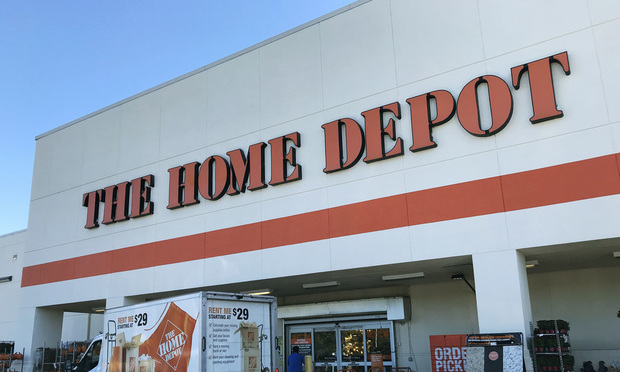The P&C insurance industry is about to be turned on its ear by the Internet of Things (IoT). For P&C insurers already facing growth and profitability issues, long-term signs are pointing to accelerated change and new challenges that will require new strategies to address changing customer behavior and view of risk.
The IoT is a web of smart inter-connected devices, people, and organizations that is a wild west of opportunity and innovation, with 30 billion devices impacting 6% of global economy by 2025. The greatest impact will be disruption through redistribution of $3 trillion in revenues, thus creating winners and losers. Within the next decade, IoT will be pervasive, with billions of connected "things" driving a data explosion with sensors embedded in cars, buildings, and wearable devices—so much so that a family of four could have more than 100 connected devices.
This IoT data will further accelerate today's fast-changing consumer expectations by enabling consumers to access a wealth of relevant, real-time information regarding themselves, their physical assets, and associated risks. For example, advanced driver assistance systems (ADAS) can already take control of a vehicle to avoid a crash. In the home, sensors or devices are able to notify homeowners about unusual activity. The IoT will fundamentally change what consumers know, when they know it, and how they interact with businesses that serve them. It will change the consumer dialogue about risk, and shrink consumers' perceptions of the boundaries of "traditional, insurable" risk.
IoT has only started to affect P&C insurance, but the situation is rapidly changing. A recent Strategy Meets Action study reveals that nearly a quarter of insurers are in some phase of IoT deployment. Broad scale IoT deployment such as Usage Based Insurance (UBI) and other telematics solutions imply limitations to premium growth as discounts proliferate. Extrapolate from here to a world of self-driving cars that never collide, and one can imagine the implications to premium as frequency drops to almost nil. Already inflation-adjusted auto insurance premiums have declined by 10 percent—$18 billion total, or roughly the size of Geico.
The potential of the IoT also includes the risk of disintermediation. Automobile original equipment manufacturers (OEMs), large telecommunications providers, and tech companies are moving in. Samsung acquired SmartThings, which makes an open platform for smart homes; Auto OEMs in Europe already offer an integrated experience that wraps in insurance and disintermediates the insurer. IoT will exponentially accelerate such shifts. BMW is making significant investments in the connected car space. If BMW eventually elected to extend the ultimate driving experience to prevention and restitution for the driver, it would potentially relegate insurers to white-label providers.
Yet the IoT offers many accessible, significant opportunities, both to support and refine the existing P&C business model and to provide new offerings for consumers. By 2025, the IoT will have a significant impact in three areas highly relevant to P&C insurers: the connected car, the connected home, and to the connected self. This connected ecosystem will create new opportunities for insurers that will cut across "home," "car," and "self" —and may even create converged or new domains. For example, consider the case of Discovery's Vitality program: wearable devices can report on the wearer's physical condition and activity levels. Integrate that with data on driving behavior, as well as shopping patterns and they can then develop much better, dynamic assessments of risk and deliver personalized solutions for their customers.
The changes will impact the core P&C business model and create new opportunities, including a shift from restitution to prevention. The wealth of data will lead to better decision making in many realms, as we are starting to see with the way that UBI offerings influence driving behavior as well as smooth the processes of claims, accident repair, roadside assistance, and car maintenance. Meanwhile, sensors across major home systems will not only provide the ability to control the home environment (such as lighting and HVAC) but also mitigate preventable losses (such as water damage). In addition, these sensors will provide better information on the condition of the home, improving the timeliness and impact of home maintenance and repairs, and hopefully educating consumers in the process.
New realities will lead to new value propositions and new sources of revenue as the cycle of invention and customer adoption continues to accelerate. With the right analytics, IoT data will provide more complete behavioral- and needs-based pictures of consumers and distinct segments than exists today. Insurers will have the opportunity to develop more holistic value propositions beyond risk management—and indeed may need to do so in order to maintain control of the customer. In both the car and the home, other incumbents are broadening their value propositions. Insurers can do the same, using their data to help consumers make wise purchase decisions and maintain the value of their assets afterwards.
To remain relevant and benefit from the IoT, insurers will have to prepare and act now. Each opportunity needs to be evaluated in the context of Insurer's strategy for the asset and executed based on time to maturity. Succeeding with the IoT will require shifts in structure, capabilities, and culture—a different way of doing business. The new, fast-changing, less predictable business environment will favor players who maintain control of the customer and become better at innovation—combined with a commitment to focused planning. The winning plans will define an overall path for each asset (car, home, and self), allowing for differentiated approaches and the potential for integration. In our next two installments, we will further address IoT led opportunities and how Insurers can turn this change into a sustainable opportunity
Joseph Reifel is a partner at A.T. Kearney, a global strategy and management consulting firm, where he leads the Financial Institutions practice for the Americas. Alyssa Pei is a partner in A.T. Kearney's Financial Institutions practice. Shamik Lala and Neeti Bhardwaj serve as principals in A.T. Kearney's Financial Institutions practice. All are based in Chicago.
Want to continue reading?
Become a Free PropertyCasualty360 Digital Reader
Your access to unlimited PropertyCasualty360 content isn’t changing.
Once you are an ALM digital member, you’ll receive:
- Breaking insurance news and analysis, on-site and via our newsletters and custom alerts
- Weekly Insurance Speak podcast featuring exclusive interviews with industry leaders
- Educational webcasts, white papers, and ebooks from industry thought leaders
- Critical converage of the employee benefits and financial advisory markets on our other ALM sites, BenefitsPRO and ThinkAdvisor
Already have an account? Sign In Now
© 2025 ALM Global, LLC, All Rights Reserved. Request academic re-use from www.copyright.com. All other uses, submit a request to [email protected]. For more information visit Asset & Logo Licensing.








